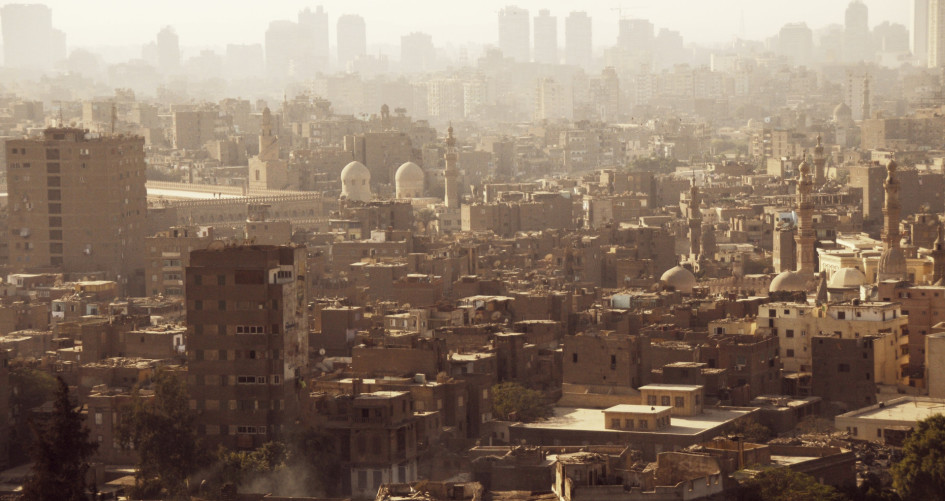This summer was the Northern Hemisphere's second-hottest meteorological summer on record, with searing temperatures recorded across Europe. According to The State of the Climate in Europe report, published earlier this month by the World Meteorological Organization (WMO), temperatures in Europe have increased at more than twice the global average over the past 30 years – the highest of any continent in the world.
A recent report by the charity CDP revealed that 46 per cent of the 998 cities around the world that submitted data experienced extreme heat in the past summer, 35 per cent declared drought and 33 per cent experienced urban flooding.
So, what can cities do to cope with this? Ademe, the French Agency for Ecological Transition, held a talk at the Global Climate Action Hub at COP27 that examined how cities in the Mediterranean region can prepare for rising temperatures.
Elodie Briche from Ademe highlighted the fact that the Mediterranean region is moving from a warm temperate climate to a more arid one. “Average temperatures are 1.5C higher than in the pre-industrial period,” she says, compared to the global average rise of about 1.1C.
Cities suffer from the “urban heat island effect” which sees cities heat at a quicker rate than the surrounding countryside due to the high concentrations of roads, pavements and buildings – these are made of materials which absorb and trap heat. This can result in city residents using more energy to avoid the heat – for example driving more and using air conditioning – which increases air pollution and CO2 emissions.
Ademe is working on a Climate Analogue Mapping tool to “inform stakeholders in the Mediterranean about climate change and stimulate dialogue between the region’s cities,” Briche says. Climate analogue mapping explores the expected future climate of a selected location with the climate of locations already experiencing those conditions today, thereby providing a more relatable, place-based assessment of climate change.
Briche highlights the southern French city of Marseilles and its three “analogues”: Limassol in Cyprus, the Tunisian capital, Tunis, and the Spanish city of Seville. The average temperate in Marseille by 2050 is projected to be 2.7C higher than today, Briche says, roughly the same average temperature in Limassol today. Marseilles’ average rainfall is projected to fall by 2050, resulting in it being the same as Seville’s average rainfall today. Looking further ahead, Briche says that while the climate of Marseilles in 2050 matches those of coastal cities in the Mediterranean region, by 2090, its climate will be closer to more southern, inland cities such as Fes in Morocco and Siliana in Tunisia.
Grey, green and blue solutions
So, given this climate trajectory, what can cities in the Mediterranean do to alleviate the worst effects of rising temperatures? Briche mentions a number of grey, green and blue solutions that can be applied across the Mediterranean region. Green solutions refer to using vegetation (such as trees) to absorb heat; blue solutions involve using water including ponds, permeable soils and rehabilitating rivers (a great example of this is the restoration of the Cheonggyecheon River in Seoul, which has reduced temperatures). Finally, Briche highlights grey solutions, which include architecture that reduces the heat effect such as porous pavements and the construction of buildings that allow natural cooling from the wind.
These solutions were explained in more detail by Vinesh Chintaram, Secretary General of the Africa Union of Architects. He highlighted the fact that architectural solutions to climate problems have been available for centuries, particularly in Africa with mud-brick buildings and natural cooling techniques enabling locals to live in harsh environments. These are examples of bio-climatic architecture, which refers to building design that takes into account the local climate.
As cities in the Mediterranean get hotter, architects and city planners can look to the past for sustainable, effective building solutions – such as adobe and mud-brick materials – to help populations cope with rising temperatures.
The key to this as Briche pointed out, is collaboration – cities need to work together to use their experience to figure out what works and what doesn’t. With temperatures across the Mediterranean set to rise in the coming decades, it is vital that the right solutions are shared and implemented.
You can watch Ademe: Riding the Heatwaves in Mediterranean Cities at the Global Climate Action Hub here.
